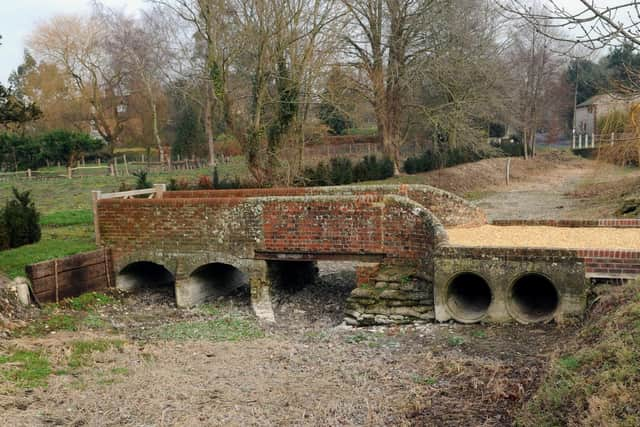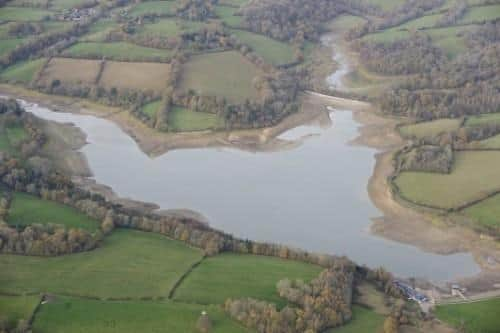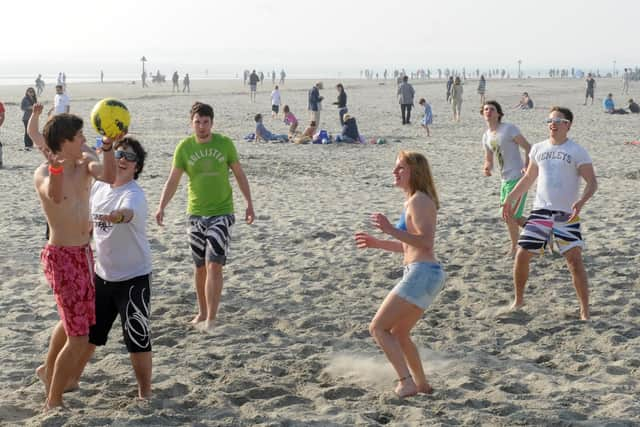March drought of 12 years ago saw West Sussex farmers desperate for rain
and live on Freeview channel 276
For the third time in 16 years, people in the Midhurst and Petworth area were faced with water restrictions after a state of drought was declared across the south east.
The Department for Environment, Food and Rural Affairs (Defra) announced a state of drought in the south east of England following the direst ten months on record since 1888.
Advertisement
Hide AdAdvertisement
Hide AdSouthern Water, which supplies households across the Rother Valley, restricted the use of hosepipes and sprinklers from April 5, 2012, and South East Water, which supplies the Fernhurst area, also introduced similar measures.


Farmers and growers in the area were pinning their hopes on heavy rain in a bid to avert a water crisis later in the summer.
Richard Chandler, who farms 1,500 acres at Moor Farm on the outskirts of Petworth, concentrating on cereal crops, told the Observer at the time the great concern was that water levels in reservoirs were very low.
The situation in West Sussex, however, was not as bad as farmers were experiencing in other parts of the country, where the water shortage meant those in the East Anglia area were being prevented from extracting water from rivers – something they were entitled to do under licences from the Environment Agency.
Advertisement
Hide AdAdvertisement
Hide AdWater for the Rother Valley was taken from the River Rother, from underground aquifers and a pipeline under the Downs from Portsmouth, and farmers were keeping an eye on water levels.Meanwhile, homeowners were stocking up on water butts, to preserve as much water as possible if the rain did fall.


At their Elmleigh home in Midhurst, award-winning amateur gardeners Wendy and Ted Liddle were a step ahead, as four years previously, they had a 1,000 litre reservoir installed underground in their garden, taking recycled water from their shower.
The restrictions on water use were the first since 2005 to 2006, when customers in the Midhurst and Petworth area suffered hosepipe and sprinkler bans for 19 months.
Southern Water announced the hosepipe ban after the Environment Agency declared some parts of the south east had seen the second driest 12 months on record.
Advertisement
Hide AdAdvertisement
Hide AdThe hosepipe bans primarily covered domestic, not commercial use and include water gardens and allotments, filling swimming pools, ponds and fountains and ban any apparatus connected to a hosepipe.


People across Chichester were urged to show 'voluntary restraint'. Unlike Southern Water, Chichester supplier Portsmouth Water had not introduced a hosepipe ban. It is instead asking people to be extra careful with how they used water, as the first stage of their three-stage drought action plan.
The company said its situation was not quite so serious but further measures could be introduced in future and it was carefully monitoring groundwater levels at its Idsworth monitoring borehole on the Hampshire-West Sussex border.
It said average recorded rainfall for five of the previous six months had been below average and this was the reason many winterbournes such as the upper reaches of the River Lavant and Ems had remained dry throughout the winter.
By the end of March 2012, the temperature was up to a sizzling 19 degrees and people were heading to the beaches and the parks.